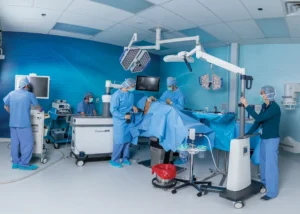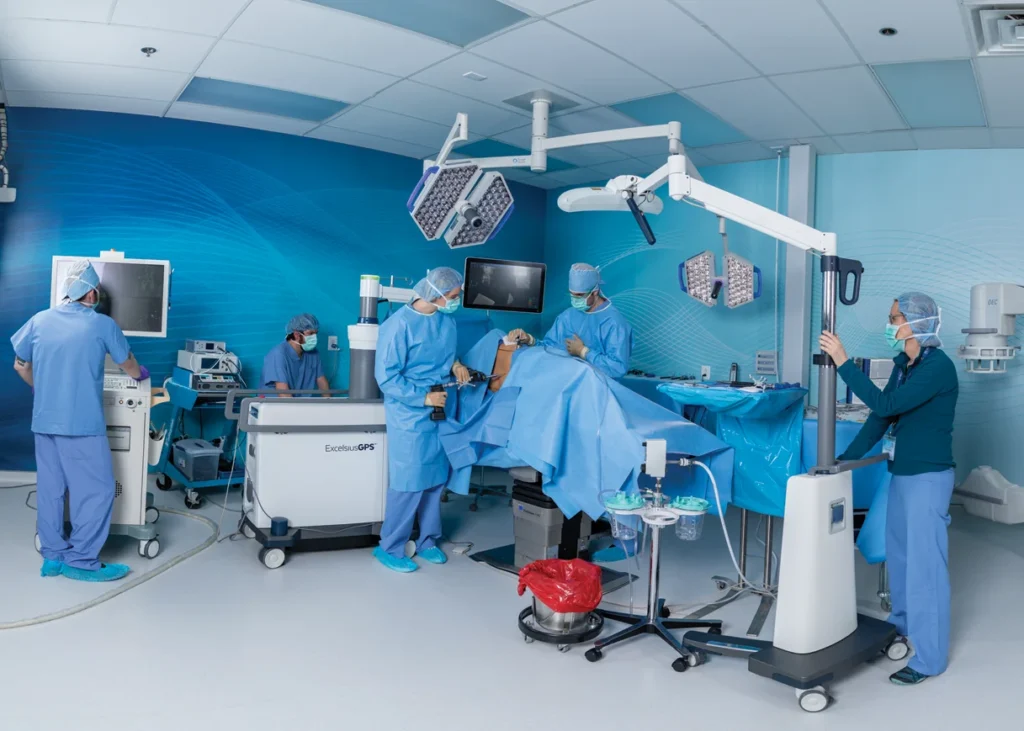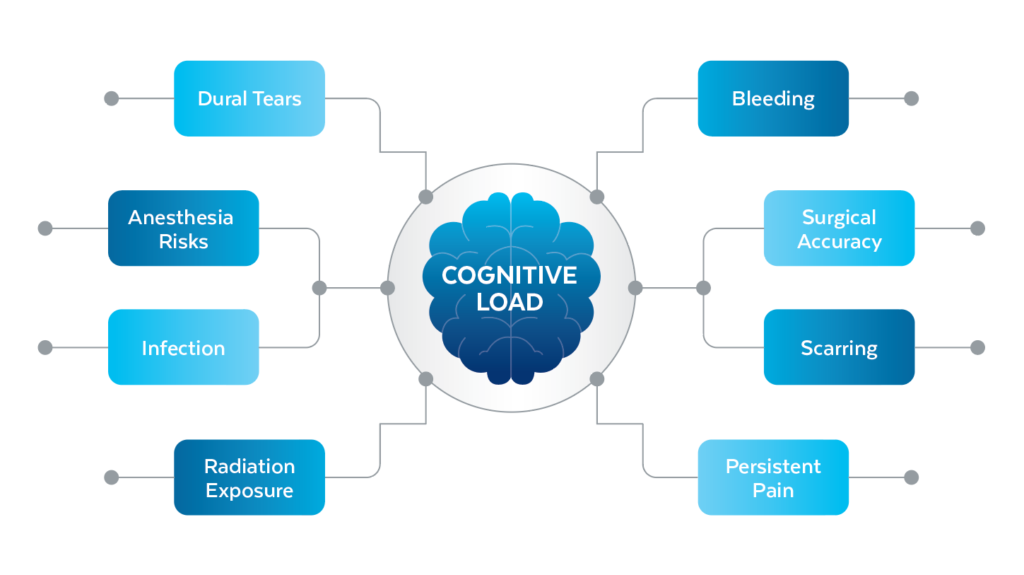Surgical Robotic Navigation: Profoundly Changing the Lives of Surgeons and Patients

- June 1, 2022
- Posted in Excelsius® Technology

In today’s rapidly changing and technology-focused landscape, exceptional healthcare does not depend on clinicians alone. To succeed, healthcare institutions need functional, dependable technology to meet patients’ needs for care and keep procedures running efficiently.
This is especially true for spine programs.
Surgeons know anatomy and the procedures needed to correct multiple given problems. What many surgeons want is the tool that helps them provide the outcomes they visualize.
And the newest, innovative tool that is actively making an impact is surgical robotic navigation.1
The Robotic Revolution
The healthcare industry is in the midst of a robotic revolution.
Healthcare communities of all sizes are already adopting robotic technology at a remarkable rate, allowing surgeons in smaller facilities to adopt the highest level of technology and care for their patients regardless of size or relationship to Integrated Delivery Network (IDN) or academic centers.
But does this technological innovation impact more than just the surgeons and hospitals?
Mike Kaiser, a Globus Medical regional sales manager for the ExcelsiusGPS® robotic navigation platform, excellently addresses this question. “Robotic technology opens the doors to new possibilities for surgeons and empowers them to use their training at a higher effectiveness. This allows them to spend more time and attention on the details of surgery to provide the highest level of outcomes for the patient.”
Surgery can be exhausting and frustrating, and the cognitive load experienced by surgeons may have a major impact on patient safety. The concept of cognitive load is the increased mental burden of paying attention to a second or third task while keeping focus on the original task.2 Having a robot in a high-demand environment may help decrease the possibility of a surgeon experiencing physical and mental fatigue; after all, operational proficiency can ease cognitive load.

“Now using ExcelsiusGPS® I am much less tired at the end of my day,” Dr. Ian Madom, MD, an orthopedic surgeon at Ortho Rhode Island, clarifies. “I think that it has relieved me of a certain amount of burden that I have in the operating room that I was trained to deal with. But frankly, there is no reason that I should continue to have to deal with it.”
Specifically developed to overcome the limitations of pre-existing minimally invasive spine procedures, ExcelsiusGPS® removes multiple factors of stress for surgeons, allowing them to focus on patient care.
Minimally invasive robotic-assisted surgery as a whole offers many benefits to patients compared to open surgery.3 With smaller incisions, minimally invasive surgery (MIS) may result in reduced infection, blood loss, pain, and overall discomfort. MIS may also help promote minimal scarring and shorter hospitalization, allowing patients to return to their lives faster than with open procedures.4
1 Huang M, Tetreault TA, Vaishnav A, York PJ, Staub BN. The current state of navigation in robotic spine surgery. Ann Transl Med. 2021 Jan;9(1):86. doi: 10.21037/atm-2020-ioi-07. PMID: 33553379; PMCID: PMC7859750.
2 Sexton K, Johnson A, Gotsch A, Hussein AA, Cavuoto L, Guru KA. Anticipation, teamwork and cognitive load: chasing efficiency during robot-assisted surgery. BMJ Qual Saf. 2018 Feb;27(2):148-154. doi: 10.1136/bmjqs-2017-006701. Epub 2017 Jul 8. PMID: 28689193; PMCID: PMC5952358.
3 Staub BN, Sadrameli SS. The use of robotics in minimally invasive spine surgery. J Spine Surg. 2019 Jun;5(Suppl 1):S31-S40. doi: 10.21037/jss.2019.04.16. PMID: 31380491; PMCID: PMC6626754.
4 Momin AA, Steinmetz MP. Evolution of Minimally Invasive Lumbar Spine Surgery. World Neurosurg. 2020 Aug;140:622-626. doi: 10.1016/j.wneu.2020.05.071. Epub 2020 May 17. PMID: 32434014.
